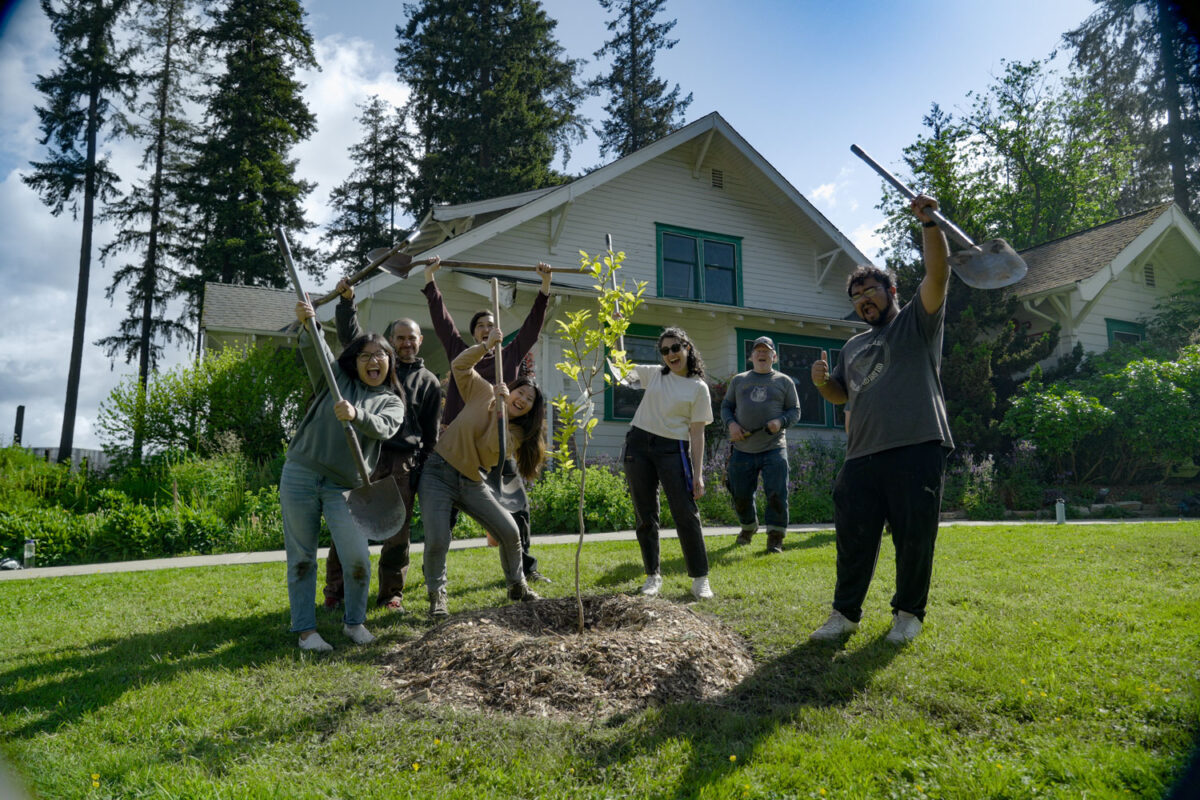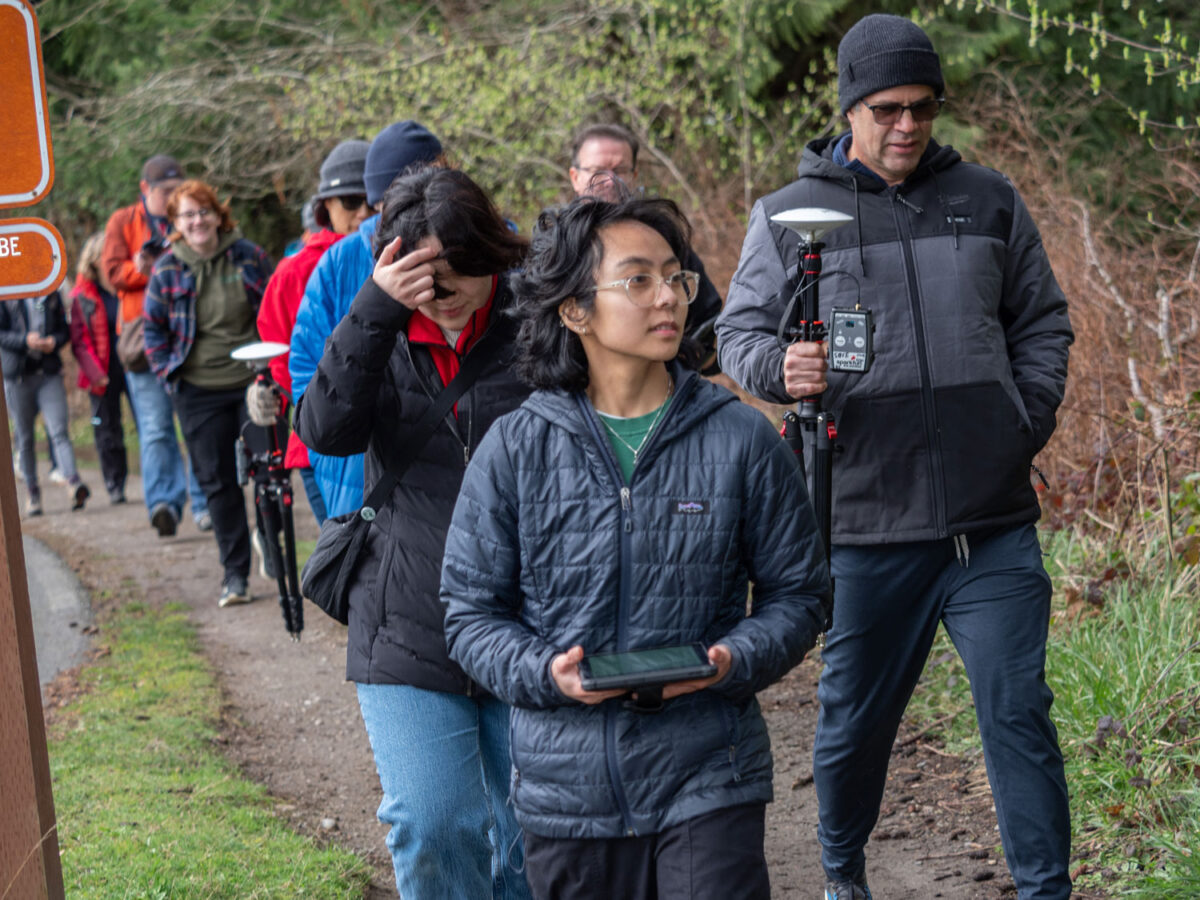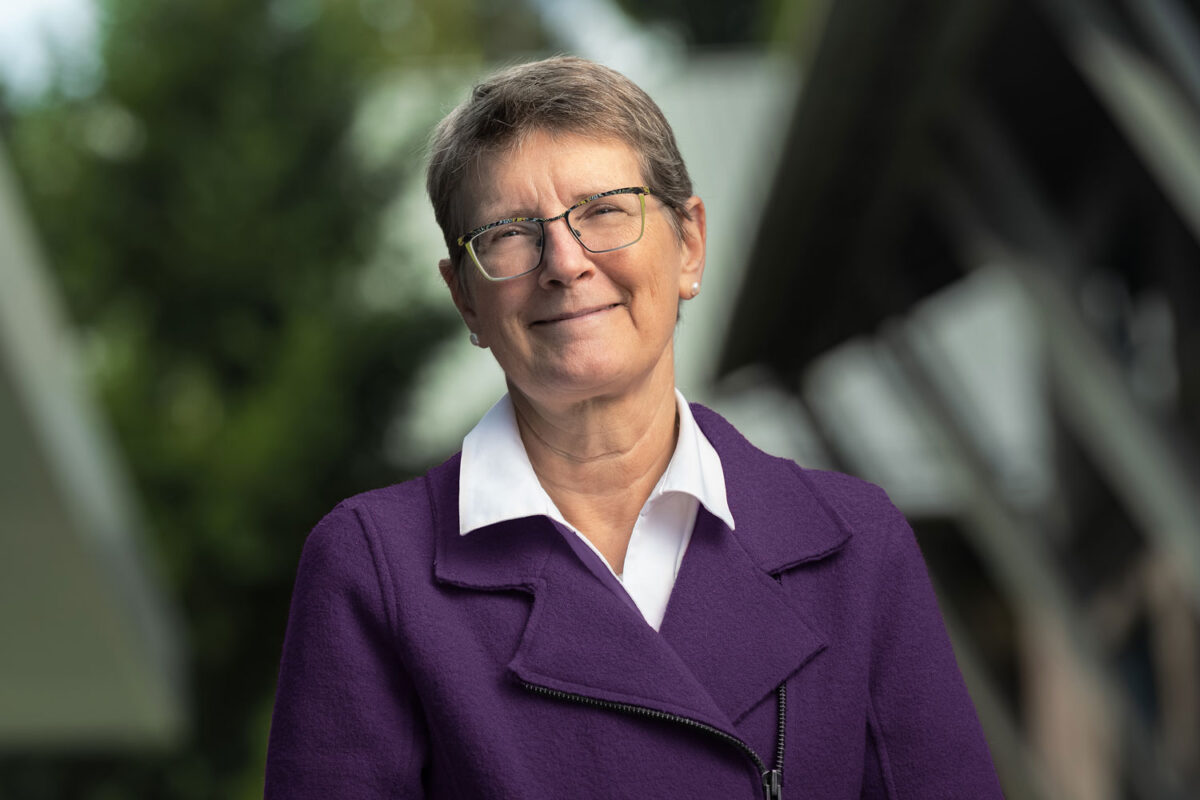From the Truly House Garden and Pollinator Patch to the North Creek Wetland, people on the University of Washington Bothell campus are immersed in nature from all sides. Walking through the grounds, students, faculty, staff and visitors can enjoy the campus by opening all their senses to the experience. They can see, hear, smell, touch and even taste all the landscape has to offer.
UW Bothell since arriving on its current campus has made sustainability a core part of its mission. In partnership with Cascadia College, UW Bothell approaches its ongoing development with intentionality and a desire to optimize space for both the use and enjoyment of the people it serves as well as for the flourishing of the environment and wildlife.
A key feature of the many cultivated and wild spaces around campus are a number of places where edible plants can be found, including the Food Forest, the Campus Farm, the Herb Walk and the Chase House Orchard.
The campus recently expanded its ever-growing edible offerings by planting four new fruit trees in the orchard — an addition made possible by the Campus Sustainability team and a group of students who wanted to support their community.
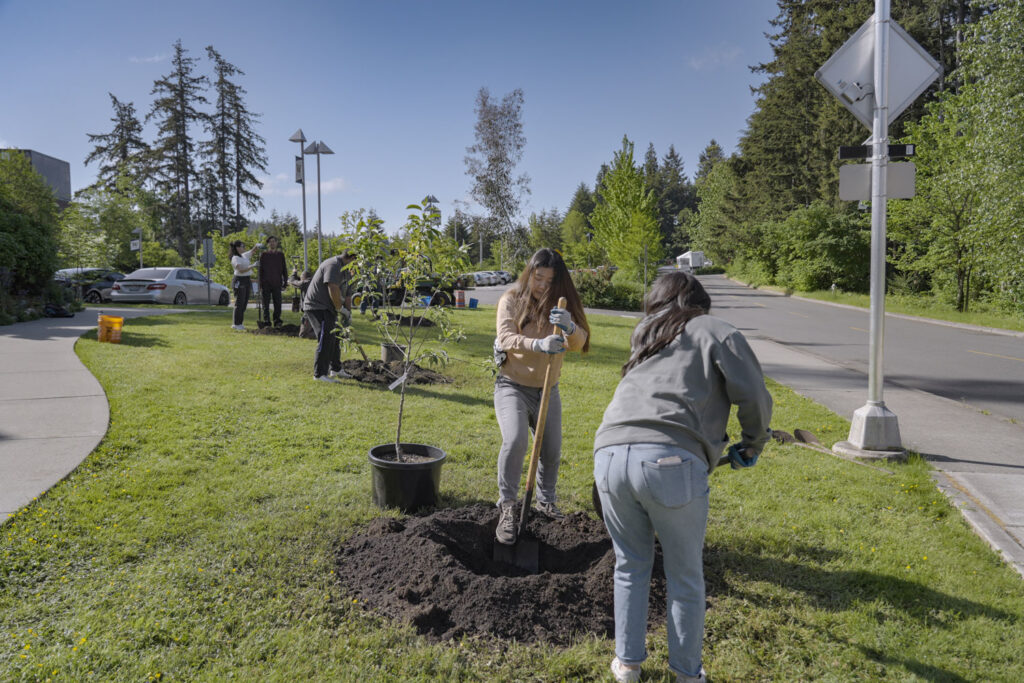
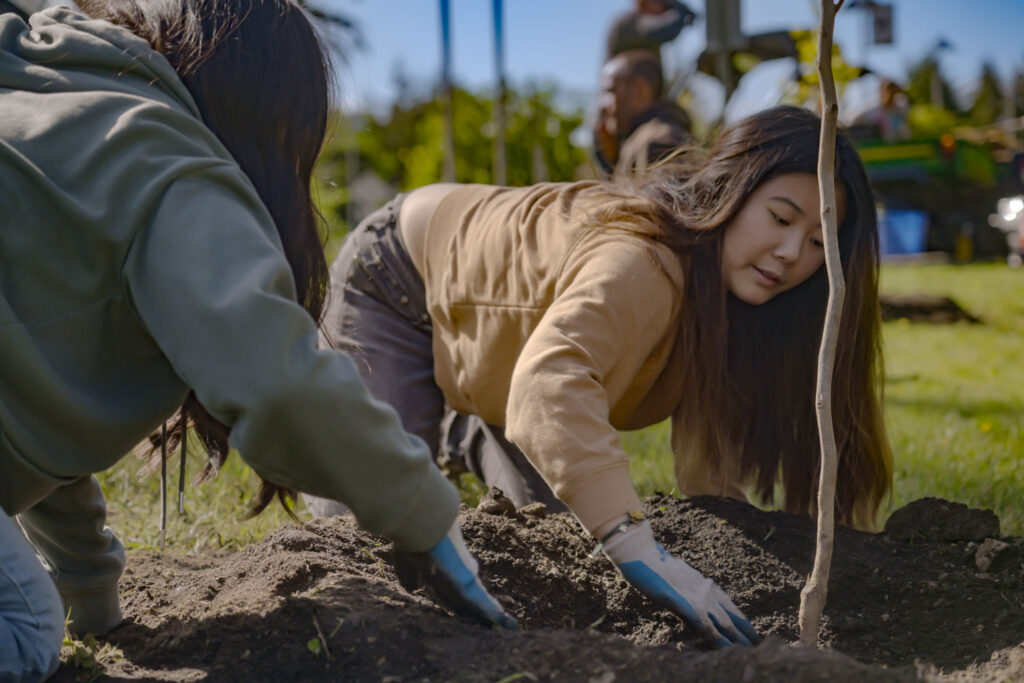
Learning through partnership
Community engagement is a common element across UW Bothell’s academic disciplines, and many faculty incorporate this theme in their research and teaching. In her winter 2024 class, “Conservation and Sustainable Development,” Dr. Martha Groom invited students to engage with community partners through a project related to conservation and sustainability.
Among the opportunities the professor in the School of Interdisciplinary Arts & Sciences presented was the chance to work with Campus Sustainability on a variety of projects, such as working on the podcast “Common Caws for Sustainability,” volunteering in the Campus Farm and supporting events for Earth Month.
“The sustainability office does so much,” Groom said. “It is truly helpful to partner with students to move ideas forward, and to provide ideas and alternatives for the team to choose from.”
One group of students decided to take on doing research for new fruit trees. The community project, Groom noted, was a mutually beneficial opportunity.
“This helped move forward a priority of the sustainability team that it did not have time to complete,” she said. “For the students, they could think concretely about steps that can be taken to improve the campus and related kinds of environments.”
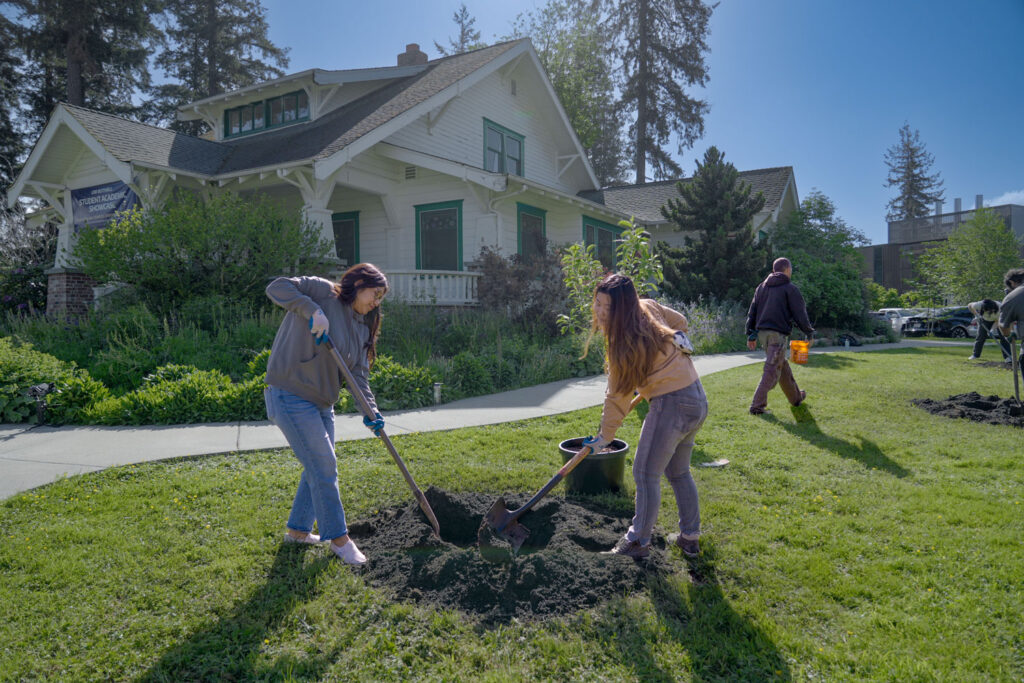
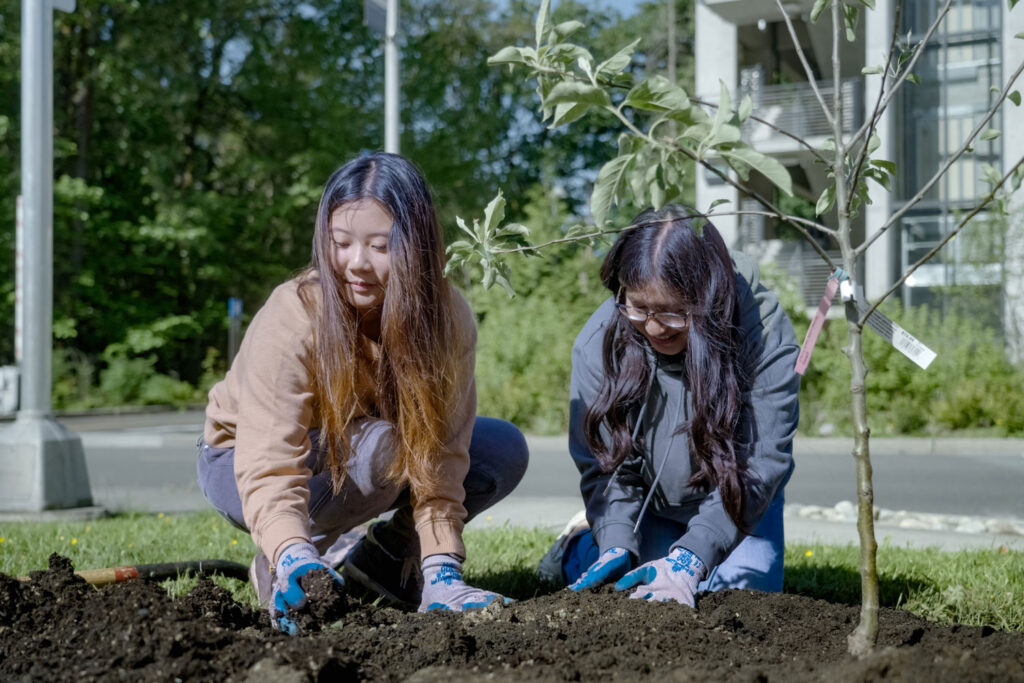
This helped move forward a priority of the sustainability team that it did not have time to complete. For students, they could think concretely about steps that can be taken to improve the campus and related kinds of environments.
Dr. Martha Groom, professor, School of Interdisciplinary Arts & Sciences
Researching benefits for all
When junior Media & Communication Studies major Maria Indalecio first saw the list of possible project to consider, the opportunity to work with Campus Sustainability to do something that benefited the campus piqued her interest. Tara Crumby (Global Studies ’24) and Rachel Tojio (Interdisciplinary Arts ’24) were also drawn to the project, and the three got assigned to work together.
“It was a highly organized and motivated group of students,” said Shahrzad Tehrani, UW Bothell’s sustainability coordinator. “They collaborated really well as a team and came in ready to ask questions to help them move forward with the report.”
The students were tasked with investigating the many considerations and steps that were needed before the Sustainability team could break ground on the planting.
“Part of my role in this project consisted of research and field work,” Indalecio said. “I learned about the many, many fruit tree varieties that could be compatible with Washington’s climate.”
The students looked at different factors, such as irrigation potential and growing seasons, as they researched where on campus would be best suited to the new trees, what species would integrate well with the existing landscape — and what would be most enjoyable to the humans who would partake of the fruit.
The project plan called for weekly meetings, multiple site visits and a feedback component to tie new learnings to the research. The feedback, Indalecio added, was essential to the success of the final report the group produced.
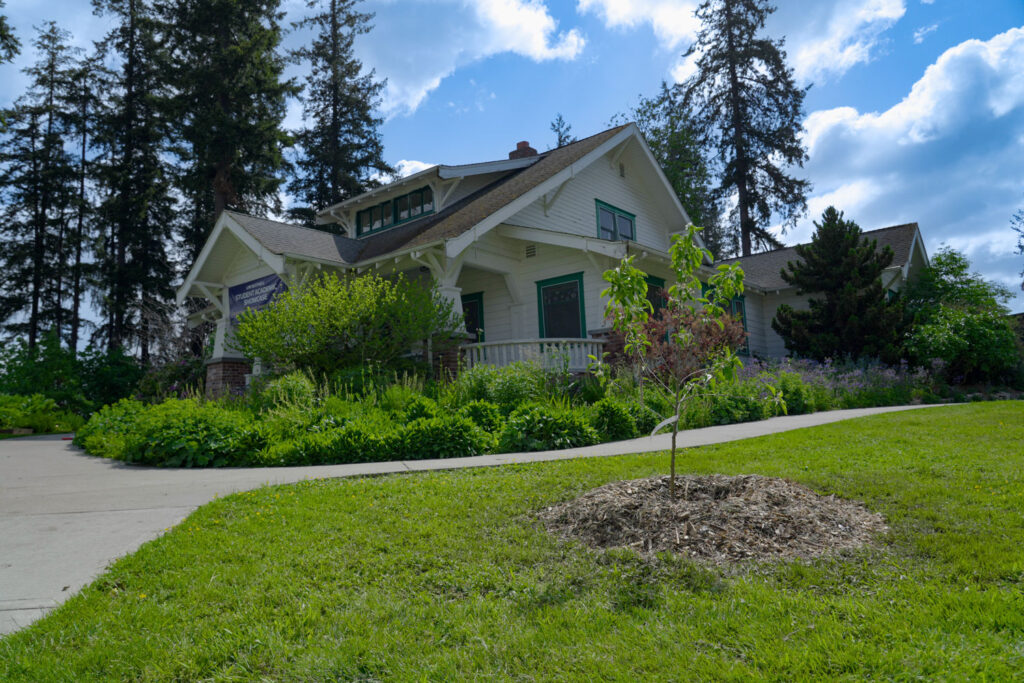
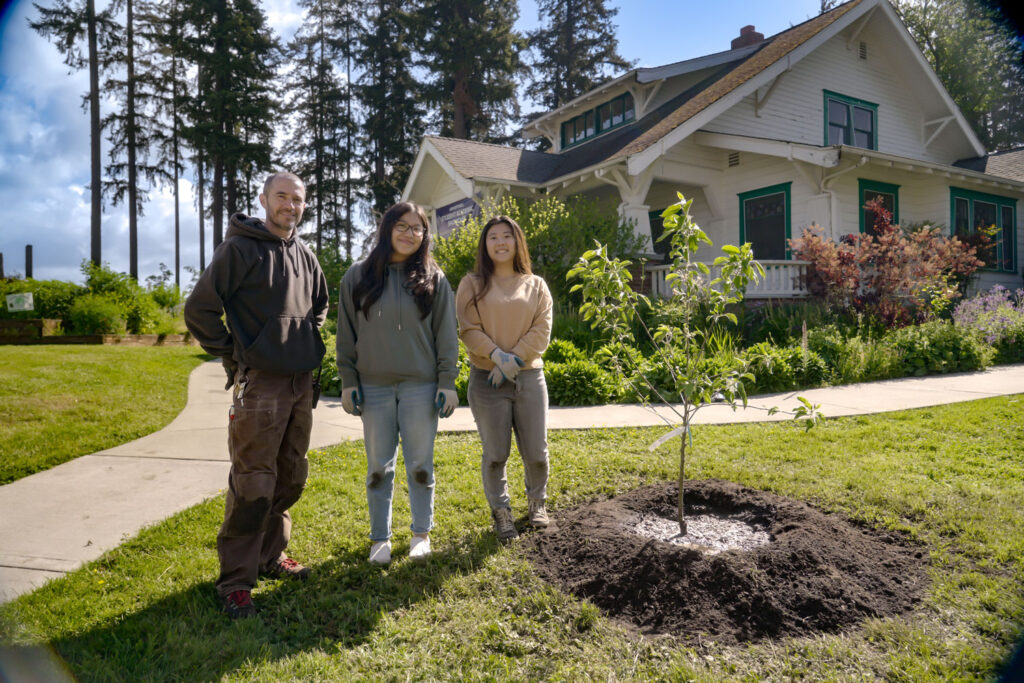
Working around practical limitations
One of the biggest challenges the team had to work with was the seasonal limitations of the fruit species they researched. Part of the goal for the project was to find fruits that could be enjoyed during the school year, rather than the summer when fewer people are on campus. The students wanted to find trees that could produce fruit within a year or two as well, rather than several years down the road. Species that bear fruit in fall and winter were ideal, but that also meant there were fewer options.
Availability was also key. Just because a species met the desired parameters didn’t necessarily mean it was available in local stores or fit within the available budget.
“It was a really good part of the project for them to have to deal with limitations and restrictions,” said Tyson Kemper, UW Bothell’s manager of grounds and wetland operations. “You can want whatever you want, but if it’s not available to purchase regionally or isn’t seasonal, then you’re not going to get it. They were doing some good real-world exercises.”
For Indalecio, the experience only grew her appreciation for the UW Bothell campus and those who help sustain it.
“I’m extremely grateful to attend a school that prioritizes student and staff needs,” she said. “I enjoyed collaborating with everyone as I learned something from each person I met. Our work helps introduce more food sources for the students of UW Bothell and the wildlife around our campus, provides food security, and actively promotes sustainable practices to the community.”
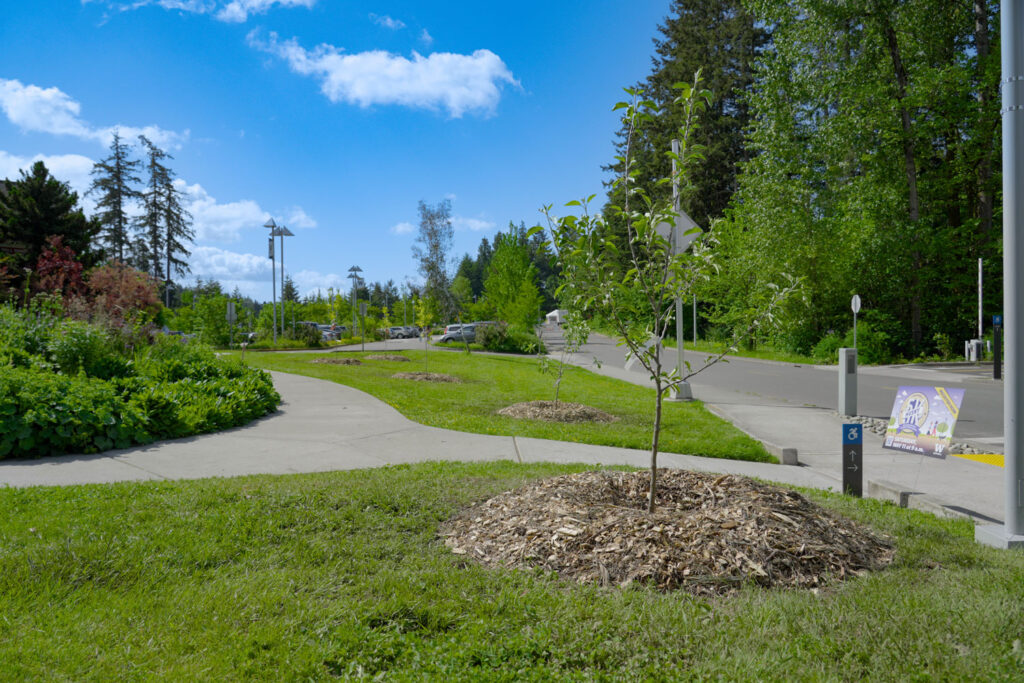
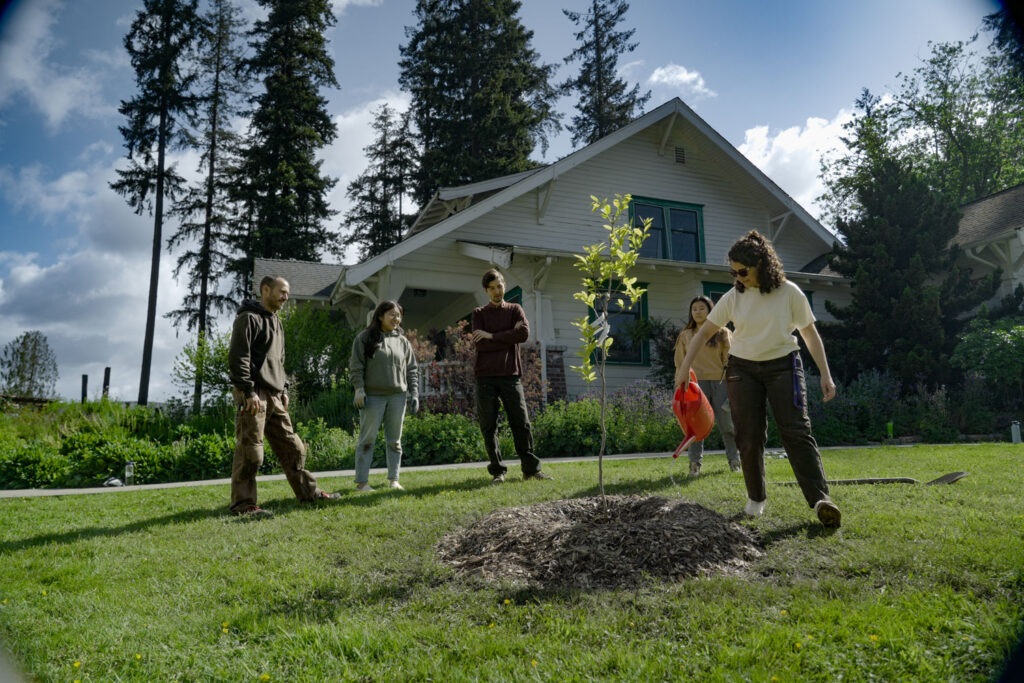
Fruits of their labor
After the students completed their report, the sustainability team used the information provided to make a final selection and order the new trees. In May, the grounds crew planted two Fuyu persimmon trees, a Honeycrisp apple tree and a Granny Smith apple tree. A medlar tree will also soon be planted alongside these.
The trees will produce fruit in their first year, although they will be removed to allow the trees to use their energy for more growth and root development in their new environment. The campus community can expect to enjoy fruit from the new trees in 2025.
“It was an informative and exciting experience being able to work behind the scenes on a special project,” Indalecio said. “I felt lucky to work with a group of people who were as passionate as I was for this project and to be able to plant some fruit trees on campus!
“Being able to see our work from the first stage to the final step felt very rewarding.”
For the staff members in Campus Sustainability, the opportunity to incorporate students into their work was also a huge win — one they hope to replicate in the future by engaging more students in sustainability projects around campus.

